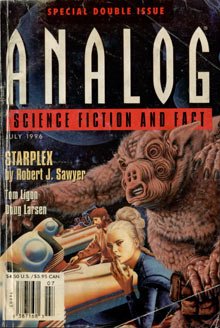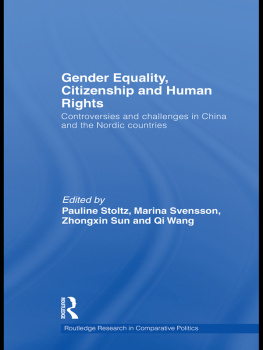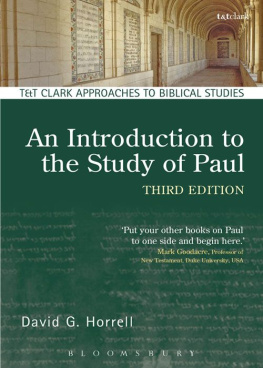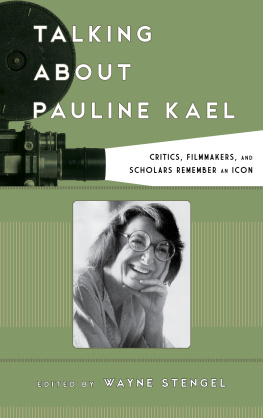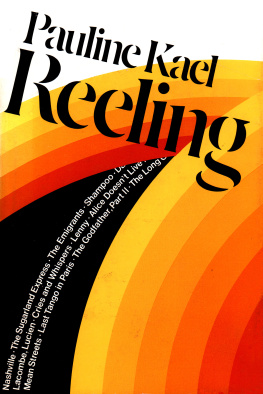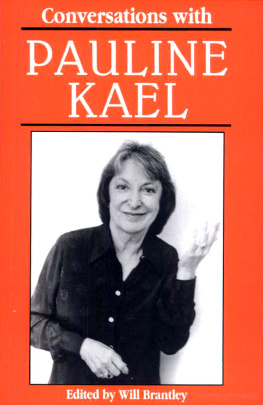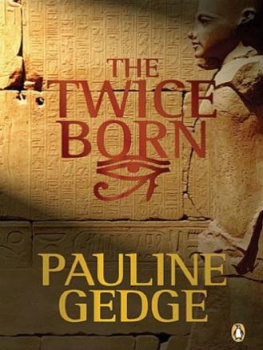SAGE was founded in 1965 by Sara Miller McCune to support the dissemination of usable knowledge by publishing innovative and high-quality research and teaching content. Today, we publish more than 750 journals, including those of more than 300 learned societies, more than 800 new books per year, and a growing range of library products including archives, data, case studies, reports, conference highlights, and video. SAGE remains majority-owned by our founder, and after Saras lifetime will become owned by a charitable trust that secures our continued independence.
Los Angeles | London | Washington DC | New Delhi | Singapore

Pauline Couper 2015
First published 2015
Apart from any fair dealing for the purposes of research or private study, or criticism or review, as permitted under the Copyright, Designs and Patents Act, 1988, this publication may be reproduced, stored or transmitted in any form, or by any means, only with the prior permission in writing of the publishers, or in the case of reprographic reproduction, in accordance with the terms of licences issued by the Copyright Licensing Agency. Enquiries concerning reproduction outside those terms should be sent to the publishers.
Library of Congress Control Number: 2014937948
British Library Cataloguing in Publication data
A catalogue record for this book is available from the British Library
ISBN 978-1-4462-8295-3
ISBN 978-1-4462-8296-0 (pbk)
SAGE Publications Ltd
1 Olivers Yard
55 City Road
London EC1Y 1SP
SAGE Publications Inc.
2455 Teller Road
Thousand Oaks, California 91320
SAGE Publications India Pvt Ltd
B 1/I 1 Mohan Cooperative Industrial Area
Mathura Road
New Delhi 110 044
SAGE Publications Asia-Pacific Pte Ltd
3 Church Street
#10-04 Samsung Hub
Singapore 049483
Editor: Robert Rojek
Assistant editor: Keri Dickens
Production editor: Katherine Haw
Copyeditor: Catja Pafort
Marketing manager: Michael Ainsley
Cover design: Francis Kenney
Typeset by: C&M Digitals (P) Ltd, Chennai, India
Printed and bound by CPI Group (UK) Ltd, Croydon, CR0 4YY
At SAGE we take sustainability seriously. Most of our products are printed in the UK using FSC papers and boards. When we print overseas we ensure sustainable papers are used as measured by the Egmont grading system. We undertake an annual audit to monitor our sustainability.
List of Figures, Tables and Boxes
List of Tables
List of Boxes
About the Author
Pauline Couper is Head of Programme for Geography at York St John University. Prior to this she was Senior Lecturer and Research Coordinator at the University of St Mark & St John (Marjon) in Plymouth, where she taught research methods and guided undergraduates through research projects for over a decade and supported staff research within the University from 2004 to 2014. In 2014 she was awarded the Marjon Students Union Student-Led Teaching Award for Outstanding Supervisor. Also winner of the RGS-Blackwell Area prize (2005), Pauline has a PhD in fluvial geomorphology and professional experience in geoconservation, and has always maintained enthusiasm for the breadth of the discipline. Her research interests now lie predominantly in philosophy of geography and human/environment relations, particularly in terms of how geographical and environmental knowledges are developed and performed.
Preface
Appropriately for a geography book, the existence and form of this one have undoubtedly been influenced by place. When I first moved to Plymouth (UK) I had no inkling that I would ever own a boat but, after several years in the city, it seemed a perfectly reasonable idea. There are boats for almost every budget, which was quite a revelation for someone who grew up with a notion that boats were solely the preserve of the rich and glamorous. Owning an old boat means winters were spent in the boatyard for maintenance and restoration. Many jobs benefit from two pairs of hands, but space inside a boat can be somewhat restrictive. So it was that I found myself standing out of the way at the back of the boat, enjoying the sunshine of a crisp early spring morning on the bank of the river, with time for my mind to wander. I wish there was a book that was followed by a Maybe kind of thought. I found a scrap of paper in my pocket with various boat dimensions written on one side, turned it over and scribbled a list of half a dozen chapters I thought might be needed in such a book. Later that summer, and with Robert Rojeks encouragement, I was developing that initial list into a full proposal. The boat was now in the water, and half way across Plymouth Sound one Sunday afternoon it occurred to me that the question, What is a beach? could provide a way in to different philosophical perspectives. So this book is very much a product of the place in which it was written.
Specifically, my wish was for a book that provides clear explanations of the various -isms that have influenced geography, in terms of what they are, where they came from, and what they mean for geographical research. This, then, has been my guiding aim, and it is an aim that implies making the connections between abstract philosophy or theory and the practices of research methodology.
uses the question, What is a beach? to introduce some basic philosophical concepts, drawing out some of the different ways that geographers might answer that question. The beach provides a convenient site for thinking across the breadth of the discipline and, I hope, an accessible introduction to what can be difficult ideas.
In , I have tried to make the philosophy-theory-methodology connections explicit by:
Providing an account of recent published research (at least one journal article, and in some chapters more than one) to illustrate how those abstract assumptions or ideas translate into research practices. In most cases the examples used are from 2010 or later.
Developing an exercise for each chapter that requires students to read a selected journal article (available via the companion website) and answer questions about it, making the connections between philosophy or theory and methodology for themselves. Again, the papers used are from 2010 or later. Knowing the frustration of exercises without the possibility of feedback, the companion website provides some answers or commentary responses to the questions, enabling students to obtain some form of feedback on their own thinking if they are working independently.
Speculating about the kind of research that could be conducted at the beach using the perspective(s) discussed in the chapter. These speculations are intended as starting points, initial ideas or sketches, for the purpose of illustrating the (often tentative) moves between philosophy, theory and methodology as a potential research project begins to take shape. These at the beach discussions form relatively minor components of .








